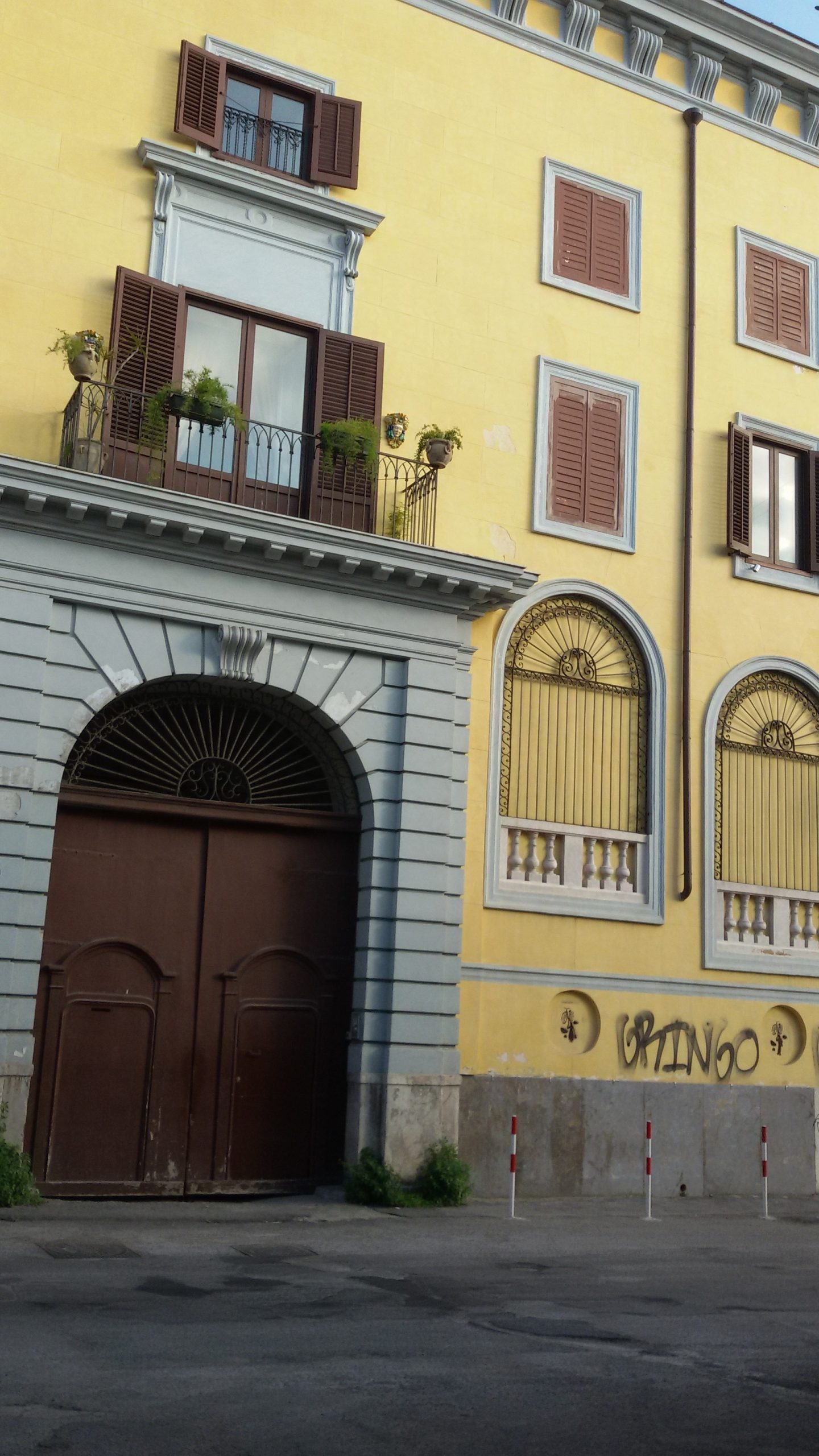Read
English version
Il Palazzo del Marchese Sant’Isidoro-del Castillo è sito tra la via Sant’Isidoro e la via del Celso nella contrada, così detta, della “Guilla” proprio nei pressi di quella che era la riva sul fiume Papireto e dove gli arabi avevano costruita una porta cittadina: la “Porta Sant’Agata”.
Il termine “Guilla” deriva dalla parola araba “wadi” che significa: riva – fiume.
Nei pressi, fuori della porta suddetta, passava quindi il fiume Papireto, il quale facilmente si allargava, straripava e creava diverse anse e anfratti, grotte che ben presto diventarono ricettacolo per malavitosi.
Queste persone di malaffare, avevano bisogno di un linguaggio sconosciuto, occulto, e così nacque il linguaggio della “Cuncuma“, ovvero un gergo molto particolare e “abbaccaghiatu”.
In questo luogo sono nate diverse leggende. Si dice infatti che nel giardino di proprietà del marchese Sant’Isidoro, raggiungibile da un cavalcavia ancora esistente, sia stato sepolto un “turco”, che ancora si compiace di apparire. Questi era il Re di Tunisi, storicamente esiliato a Palermo, e che dopo alterne vicende, sarebbe stato sepolto proprio quì.
Le notizie storiche sul palazzo sono scarse.
La fabbrica di impianto manieristico è stata innalzata alla fine del ‘500 dal Marchese Diego del Castillo.
Nel settecento, il palazzo, ha avuto una grossa trasformazione, specie negli interni, ed è passato alla famiglia De Cordoba. dopo la morte dell’ultima Marchesa: Maria del Castillo di Sant’Isidoro.
Di recente il palazzo è stato restaurato ed è usato come abitazione privata.
All’esterno su via Sant’Agata alla Guilla, risalta il monumentale portale tardo cinquecentesco a bugne verrucate di stile manierista.
Nella sala d’ingresso spicca lo stemma del soffitto di casa “Del Castillo” e i pavimenti in maiolica. Il salone da ballo è stato decorato con affreschi che rappresentano scene mitologiche dal grande pittore Cav. Gaspare Serenario.
Alcune bombe degli Alleati nel 1943 hanno distrutto, in parte, questo palazzo e l’attiguo giardino; distruggendone sia la parte costruttiva che la parte culturale poichè, il palazzo possedeva una biblioteca ricca di centinaia di volumi rilegati in carta pecora.
Durante gli ultimi restauri sono stati scoperti alcuni tetti a cassettoni dipinti, particolari stemmi delle casate nobiliari proprietarie del palazzo, ed elementi architettonici legati alla sua prima edificazione.
Indirizzo: Piazza Sant’Agata alla Guilla
*English
Palace of the Marquis SantIsidoro Del Castillo
The Palace of the Marquis Sant’Isidoro-del Castillo is located between via Sant’Isidoro and via del Celso in the so-called “Guilla” district, right near what was the bank on the Papireto river and where the Arabs had built a city gate: thePorta SantAgata. The term Guilla comes from the Arabic word “wadi” which means: creek river. Nearby, outside the aforesaid gate, there then passed the Papireto river, which easily widened, overflowed and created various bends and ravines, caves that soon became a haven for criminals. These people of ill repute, needed an unknown, secret language, and so there appeared the language of “Cuncuma”, that is a very particular jargon that of baccagghiu. Several legends were engendered in this place. Indeed, it is said that in the garden owned by the Marquis Sant’Isidoro, reachable by a still existing overpass, there was buried a “Turk” , who still appears to appear. This was the King of Tunis, who was historically exiled to Palermo, and so after various events, this king was buried right here. Historical information on the palace is scarce. The Mannerist architectural construction was built at the end of the 16th century by the Marquis Diego del Castillo. In the eighteenth century, the palace underwent a major transformation, especially in the interior, and passed to the De Cordoba family after the death of the last Marquise: Maria del Castillo di Sant’Isidoro. The palace has recently been restored and is used as a private residence. Outside on Via Sant’Agata alla Guilla, the monumental late sixteenth-century portal with rough ashlars in the Mannerist style stands out.
In the entrance hall, the coat of arms on the ceiling of the “Del Castillo” house and the majolica floors are noteworthy. The ballroom was decorated with frescoes representing mythological scenes by the great painter Cav. Gaspare Serenario.
Some Allied bombs in 1943 partially destroyed this palace and the adjacent garden; destroying both the architectural and the cultural parts as the building had a library full of hundreds of volumes whose pages were bound in parchment.
During the last restorations some painted panelled ceilings, particularly coats of arms of the noble families who owning the building, and architectural elements related to its first construction were discovered.
Address:Piazza Sant’Agata alla Guilla

